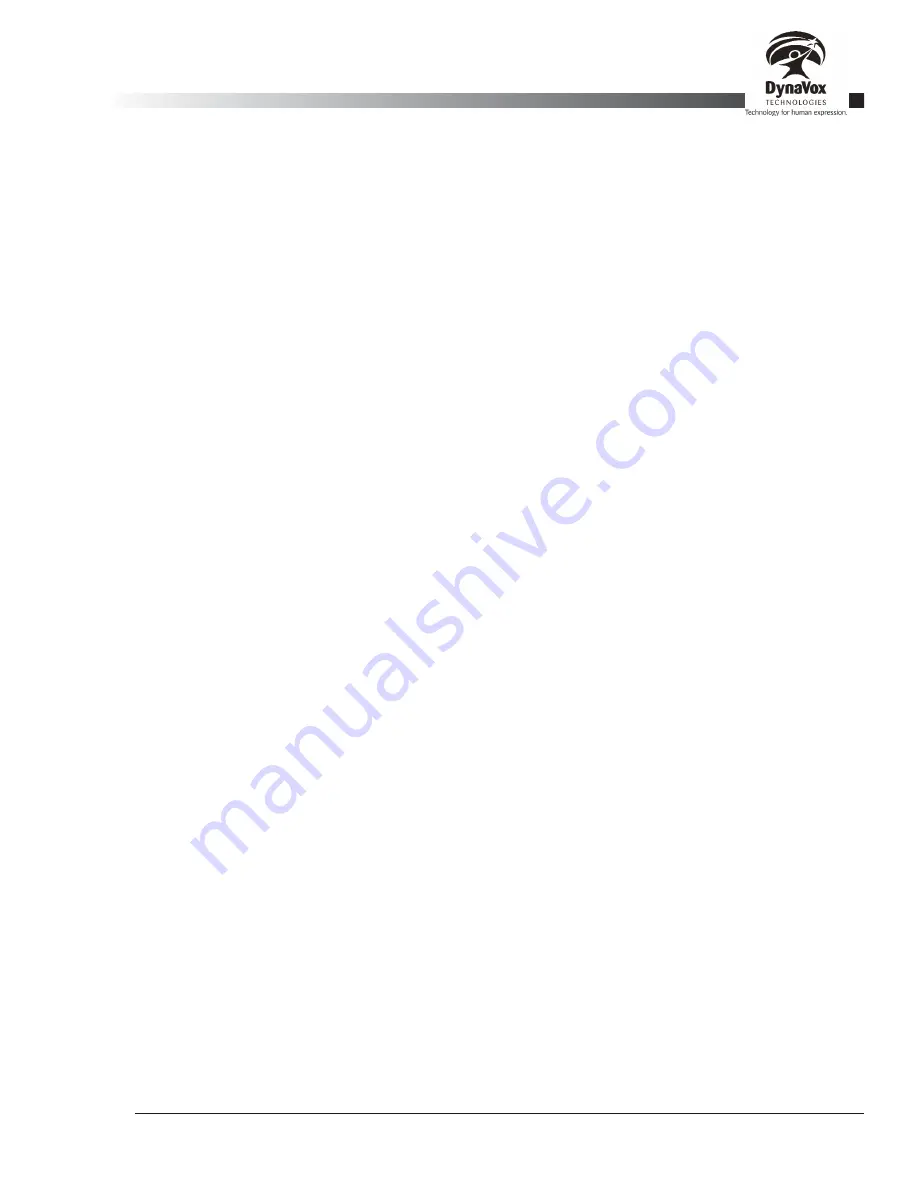
Palmtop3 User’s Guide
Part # 400670-A
55
The simplest
Action
setting is
Speak Label
. When this option is selected for a button, your Palmtop device
will speak the button's text label whenever the button is selected. The label text will also be inserted into the
Editor Window. The text label is defined using the
Label
box.
In some cases you might want the message associated with a button to be different than the text that is
shown on the button. For example, you might want to label the button "Dinner" (or have no text label, but just
a picture of a meal) but have your Palmtop device say "I would like some dinner." when the button is
selected. Do do this, select
Speak Message
in the
Action
drop-down menu. The message is defined in the
Message
box. If you want your Palmtop device to speak a button's label or message, but not put any text in
the Editor Window, select the
Say Label
or
Say Message
options in the
Action
drop-down menu.
If you want the button to play a pre-recorded audio message (digitized speech) rather than speak a label or
a message, select the
Play Audio
option in the
Action
drop-down menu. You can then select the
Browse
button to the right of the
Audio
box to select the sound file that you want to associate with the button.
If you want to use the button to navigate between different pages in the configuration, select the
Navigate
option in the
Action
drop-down menu. You can then use the
Navigate
drop-down menu to specify the page to
be associated with the button. A
Visit
action is similar to an
Navigate
action, but after a selection is made, the
software will return you to the previous page. A button with a
Navigate
or
Visit
action is represented visually
as a stack of papers with their corners folded over. A
Visit
button has an additional arrow in the upper-right or
lower-right corner to differentiate it from a
Navigate
button.
The final
Action
option is
Control
. A button of this type can be used issue editing commands or control the
speech output of your Palmtop device.
4.19.1.1. Setting Control Actions
When you select
Control
in the
Action
drop-down menu, you will have to select a
Function
from a choice of
different control types (the
Function
drop-down menu is displayed in the same place as the
Navigate
drop-
down menu). Brief descriptions of each type of control are provided below. Some of these control types have
pictures associated with them. You can change these pictures, just like you can on any other button.
•
Edit: Backspace:
Delete the previous character.
•
Edit: Backword:
Delete the previous word.
•
Edit: Clear:
Clear the contents of the Editor Window.
•
Edit: Redo:
Reinstate any action undone using an
Edit: Undo
button.
•
Edit: Swap:
Swap the contents of the Editor Window with a background text buffer.
Edit: Swap
buttons can be used for a variety of purposes, but the most common use is to provide a "Chat Mode"
while you are constructing a longer message. For example, if someone were to ask you a question
while you were working on a paper, you could select the
Edit: Swap
button to store your paper in the
background buffer, answer the question, then select the
Edit: Swap
button again to restore your
paper from the background buffer.
•
Edit: Undo:
Undo the last action.
•
Pause Dwell:
Temporarily disable dwell selection to help eliminate accidental selections while not
actively communicating. When a
Pause Dwell
button is selected, its label will change to "Resume
Dwell.” You will be unable to select any other buttons until you again dwell on the button with the
Pause Dwell
action. Note that you cannot manually change the label on
Pause Dwell
buttons.
Содержание iChat3
Страница 2: ...ii DynaVox Technologies ...
Страница 4: ...iv DynaVox Technologies ...
Страница 22: ...10 DynaVox Technologies ...
Страница 86: ...74 DynaVox Technologies ...
Страница 122: ...110 DynaVox Technologies ...






























